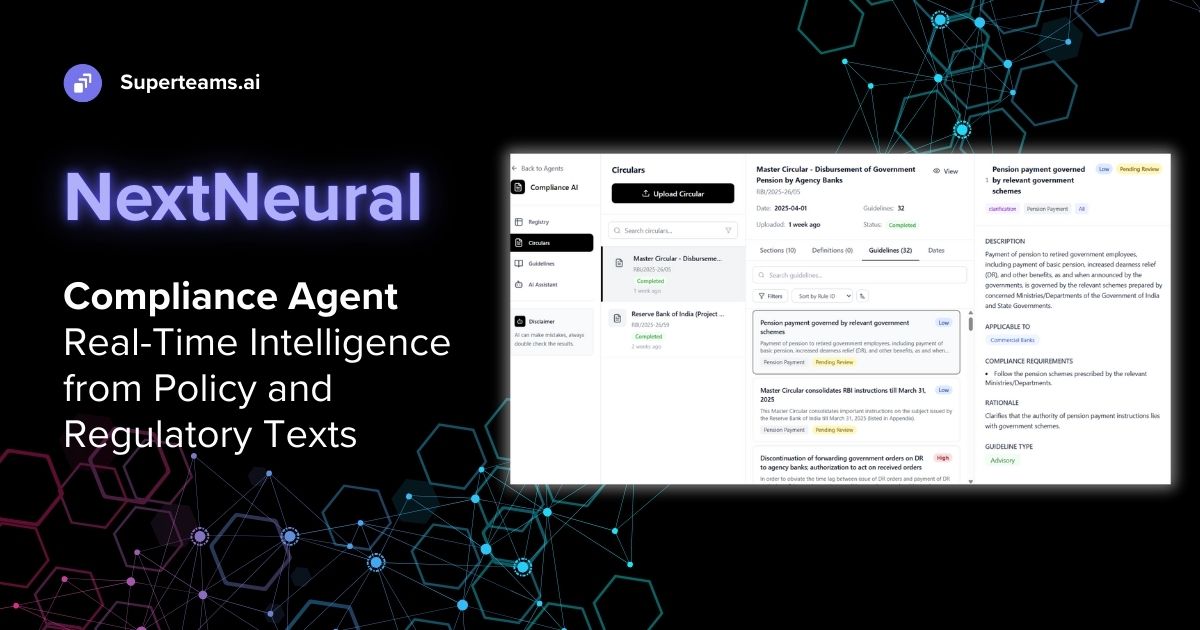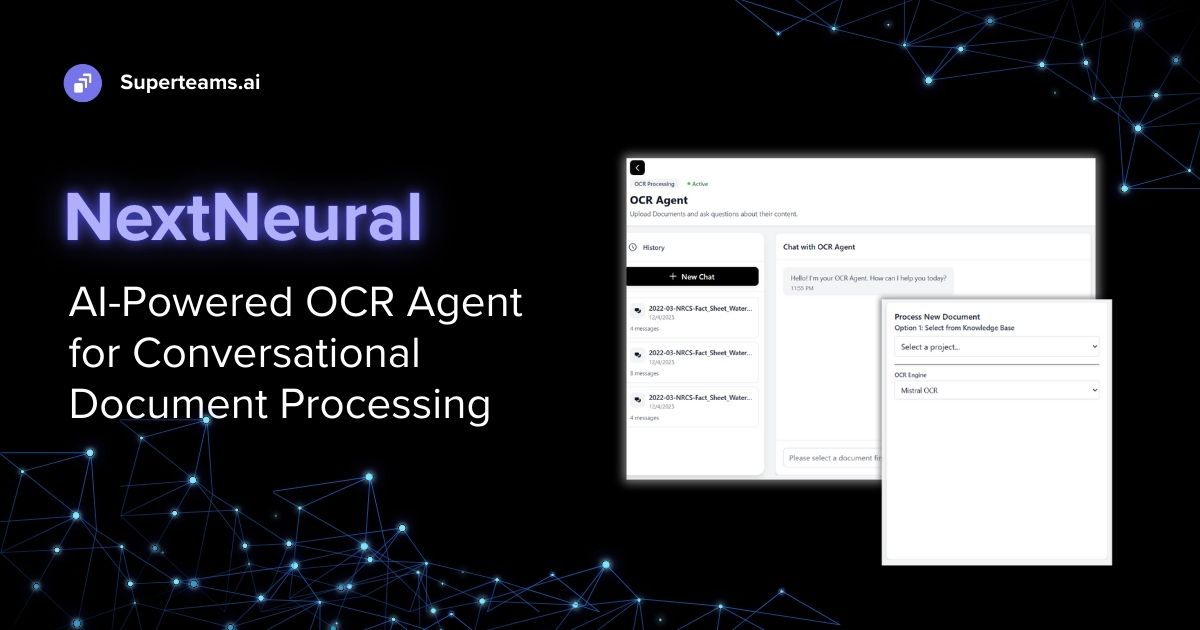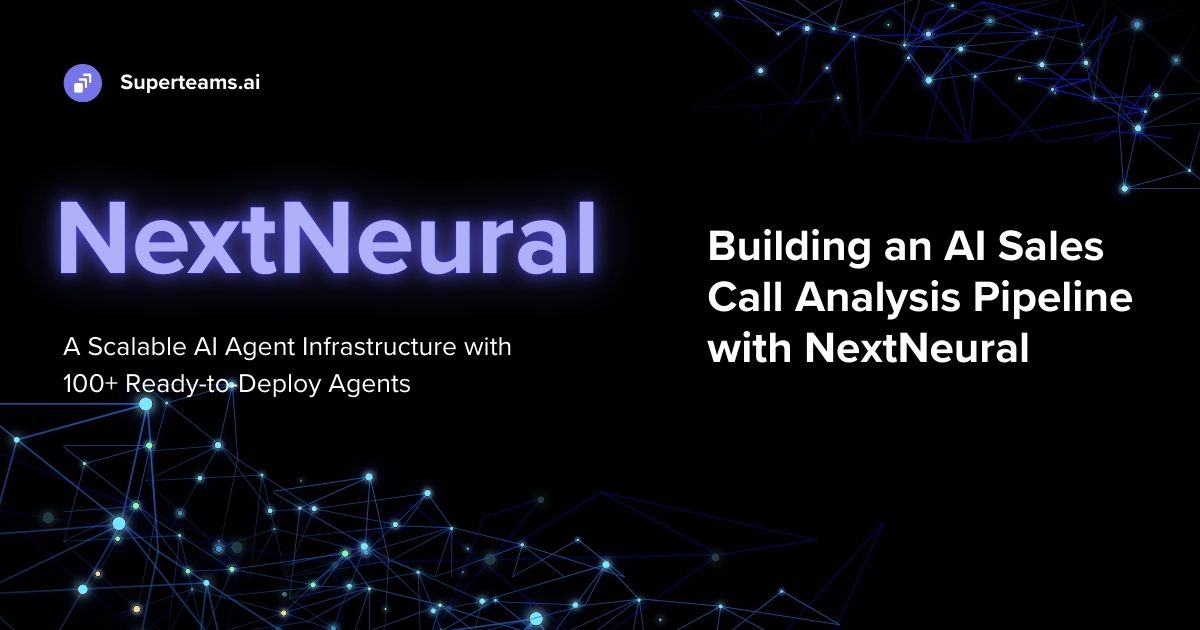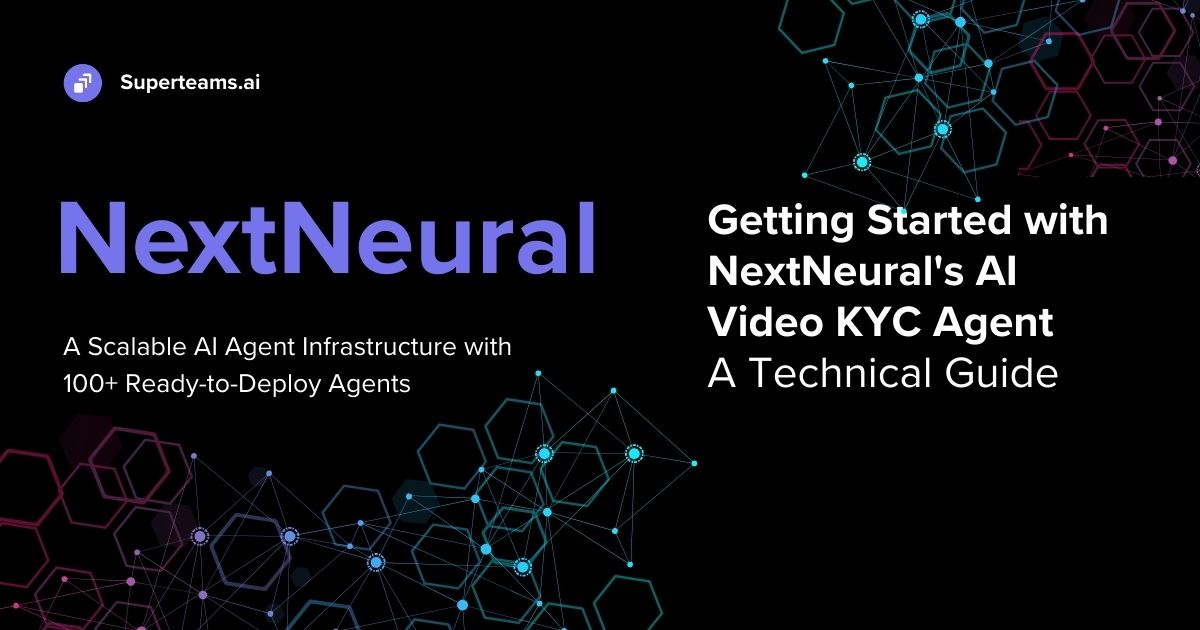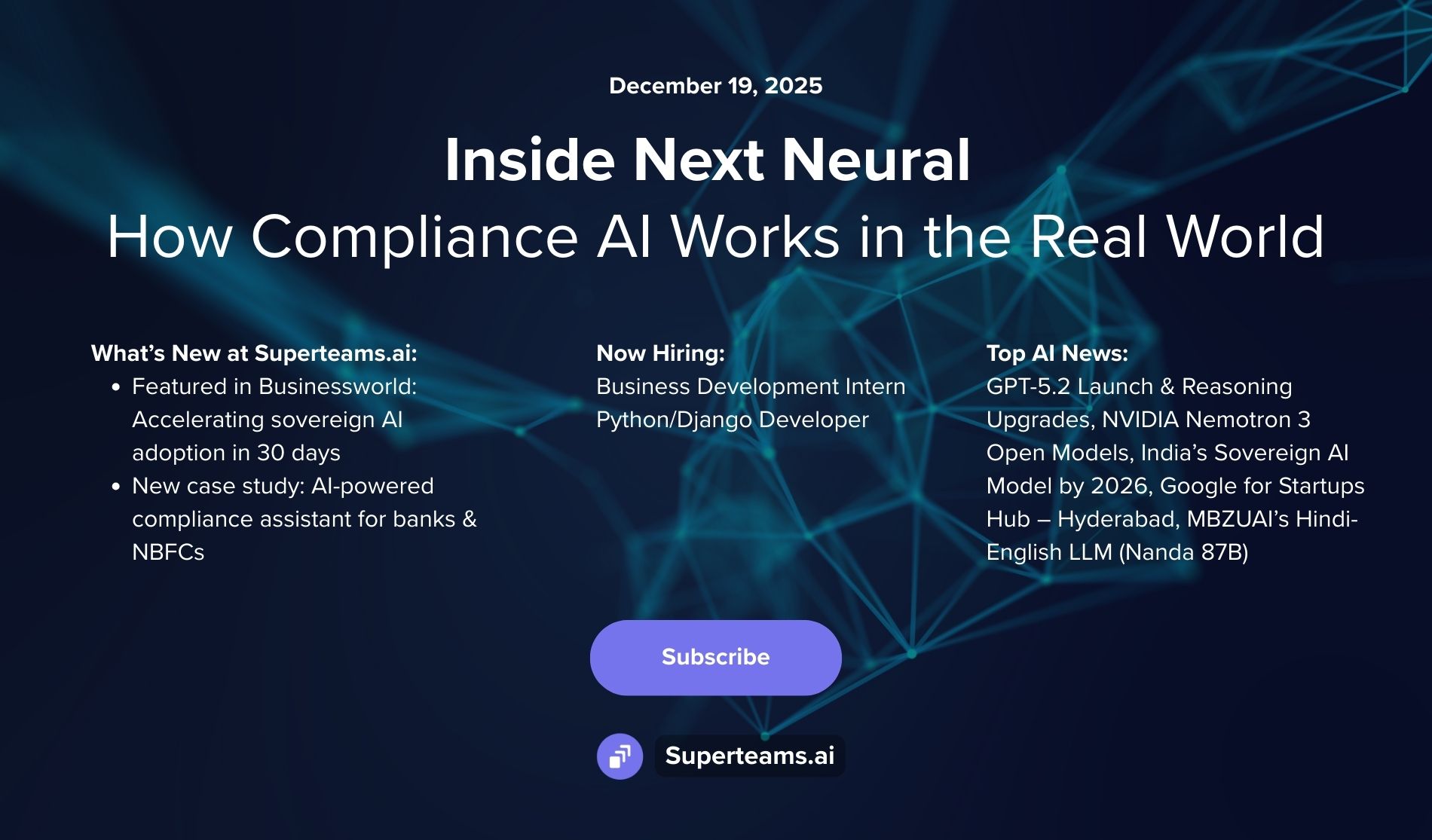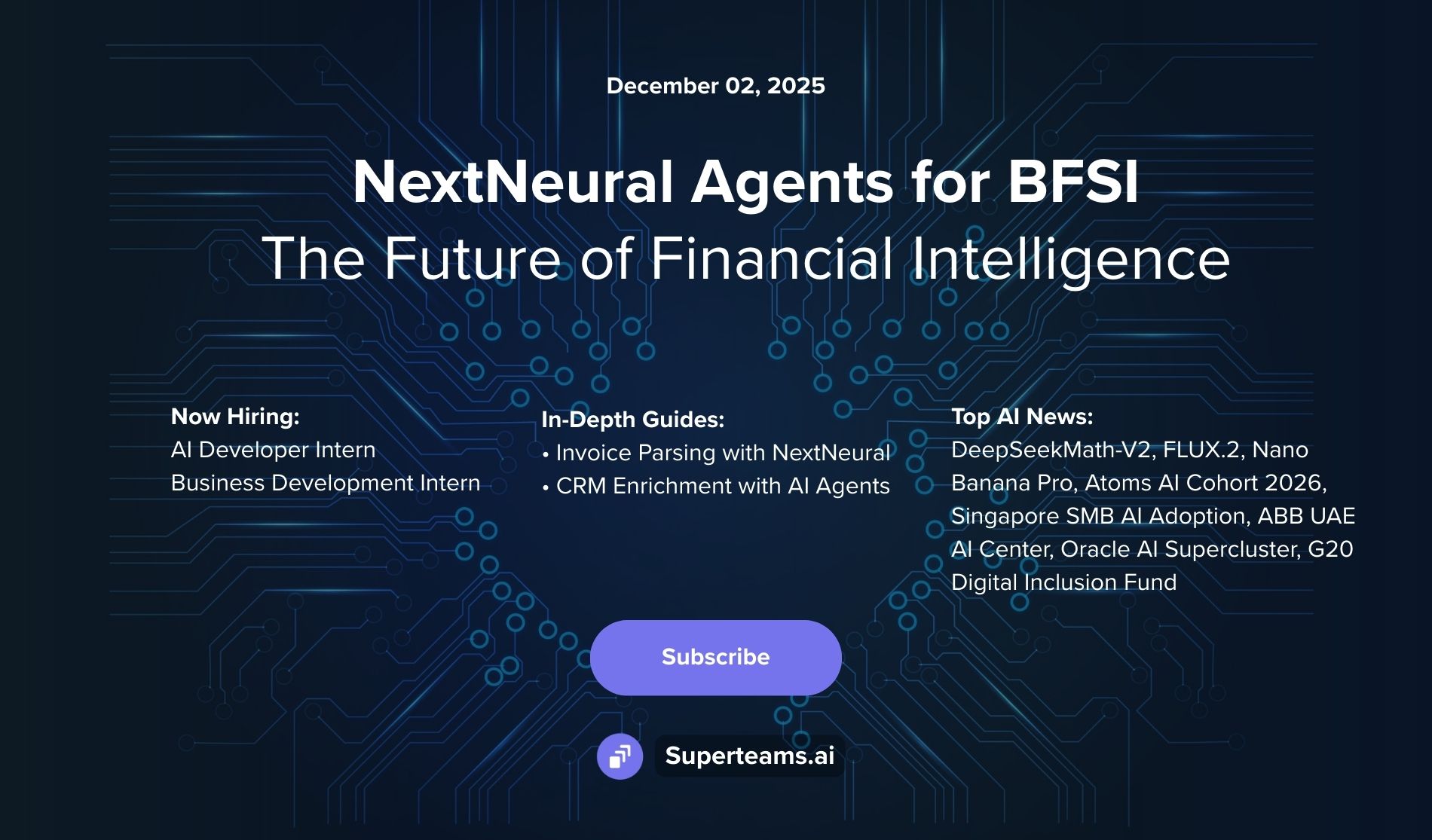Why Most Businesses Fail at AI, And How an Augmented AI R&D Team Fixes It
Most startups fail with AI due to poor data, tech debt, and misalignment. This blog explores why and how Augmented AI R&D Teams can help you ship AI features that deliver real value.
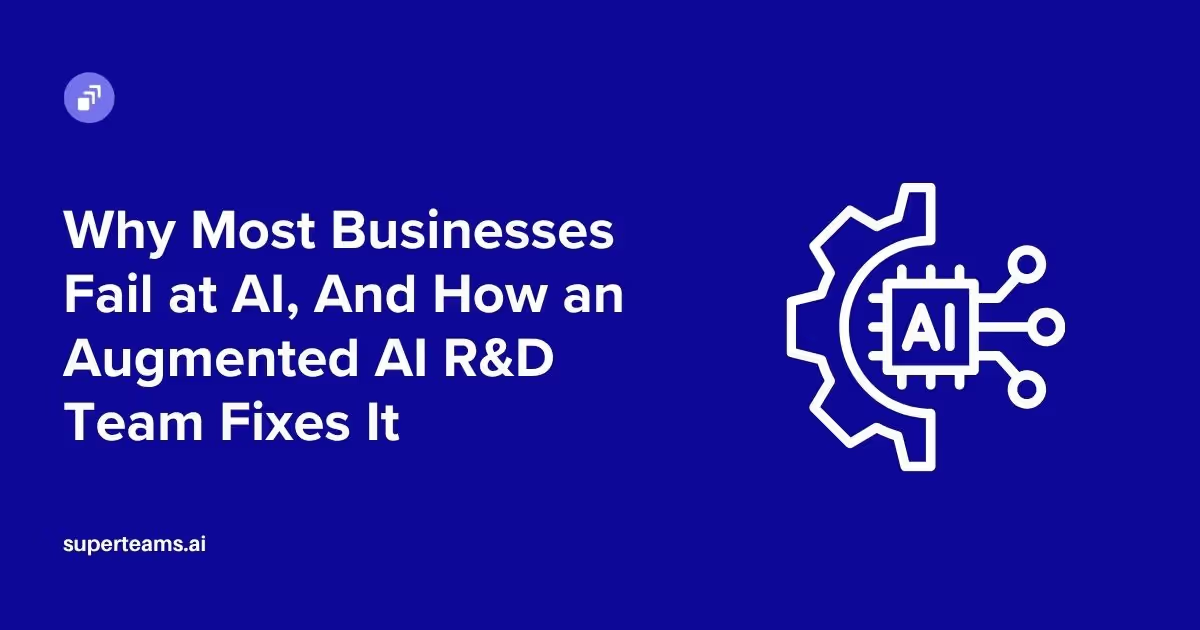
Ever since the emergence of modern AI, startups are under immense pressure to adopt AI and differentiate themselves and build defensible IP. Yet, the brutal reality is that about 90% of all startups fail, and nearly 10% shut down within their first year. One major reason for this failure is their inability to manage burn, especially when building products without the right knowhow, talent, or product-market fit. Among those that do survive, many stumble when integrating AI into their product roadmap because of a fundamental mismatch between AI’s complexity and the startup’s readiness.
Even among larger companies, the track record of AI adoption is poor: over 80% of AI initiatives fail to deliver ROI, and 42% of businesses abandoned most of their AI projects in the past year, according to S&P Global. For startups, the risks are magnified. In pursuit of “AI-native” status, many hastily embed AI features into their roadmap, chatbots, agents, predictive systems, without validating the data, modeling complexity, or user value. Often, these features become technical debt: expensive to build, hard to maintain, and disconnected from core product outcomes. Worse, poor data quality, misaligned objectives, and lack of R&D around AI models contribute to the 70%-85% failure rate of deployed AI models, as reported by NTT Data.
Yet, customer expectations have fundamentally shifted. Users now demand smart, adaptive interfaces rather than being forced to navigate rigid and complex UI flows. Where a user once had to conform to the quirks and workflows of each platform, modern AI systems invert that dynamic, adapting to the user’s behavior and context instead. So, businesses don’t really have a choice, meeting these new expectations isn’t optional. If they fail to deliver AI-enhanced, intuitive experiences, they risk being outpaced by competitors who do. In today’s market, intelligence is fast becoming the baseline.
In this article, we’ll break down the systemic challenges, like model validation, data ops, and time-to-value, and introduce the concept of an Augmented AI R&D Team. These externalized, high-context teams operate as embedded AI partners, bringing technical depth, repeatable workflows, and product-aligned iteration cycles to help businesses de-risk AI development and build AI that actually ships.
Why Do Businesses Struggle With AI Adoption?
Despite the hype and increasing accessibility of AI tools, successful adoption remains elusive for most companies. The reasons are rarely about the capabilities of AI models. AI APIs offered by companies like OpenAI, Cohere, Anthropic, Together or Groq, have simplified access to LLMs. Open-source frameworks like Pydantic AI, Anthropic’s MCP or Google’s ADK have simplified how agentic systems are built. The real problem lies deeper: in the disconnect between what businesses think AI will do, and what it actually takes to make it work in a production environment.
Underestimating the complexity of an AI workflow
Most teams underestimate the lifecycle of an AI feature. It’s not just about integrating an LLM or calling a pre-trained model; it involves end-to-end orchestration, from data collection and preprocessing, to experimentation, evaluation, human-in-the-loop validation, and monitoring drift in production.
Without a robust R&D loop, AI becomes a black box that might work in demos but fails in edge cases or real-world variability. This problem is often augmented by opaque frameworks that make it difficult to understand the prompts and workflows that lead to flawed outcomes.
Siloed teams
Moreover, teams often lack the interdisciplinary skillset needed. AI success is a lot about product design, system architecture, data streamlining, backend infrastructure, prompt engineering, and continual user feedback loops.
Finally, there’s a cultural gap. Many businesses treat AI like a feature, not a capability. They bolt it onto a product roadmap without evolving their development practices, team composition, or iteration cycles to accommodate the experimental nature of AI. The result? Projects stall. Models underperform. Internal confidence drops. And eventually, AI becomes just another abandoned initiative.
Lack of post-deployment ownership
Even when teams manage to deploy an AI feature, they often fail to plan for its post-launch lifecycle. Unlike traditional software, AI systems are probabilistic: they require continuous monitoring, fine-tuning, and feedback loops to stay effective. Without a clear owner responsible for tracking model performance, updating prompts or datasets, and interpreting user interactions, even initially successful features degrade over time. This absence of accountability, across both engineering and product teams, turns live AI into silent liability, quietly eroding user experience and trust.
Cost of talent
Most importantly, AI talent is expensive, and scarce. Building even a modest in-house AI capability requires hiring across multiple roles: data scientists, ML engineers, infrastructure specialists, and increasingly, AI product managers and prompt engineers. For early- and mid-stage startups, or non-tech businesses, assembling such a team is often financially unsustainable. Salaries for experienced AI practitioners regularly exceed those of traditional engineers, and hiring the wrong profile can lead to prolonged misalignment. As a result, many companies either over-rely on generalized developers who lack depth in AI systems, or delay hiring altogether, both of which lead to stalled progress and mounting opportunity costs.
How to Adopt AI the Right Way
AI is a capability that must be prototyped, iterated, and refined through R&D-led experimentation. The companies that are getting AI right aren’t just building features; they’re treating AI like a research function embedded into their product pipeline. Take Johnson & Johnson and Visa, two seemingly traditional enterprises that now run thousands of AI pilots annually. Why? Because they’ve learned that identifying the “one that works” requires testing dozens that don’t. It’s an R&D process: hypothesis, prototype, feedback, iteration.
For startups and mid-market companies, this mindset often doesn’t exist. They seek deterministic answers from probabilistic systems. But successful AI adoption mirrors scientific exploration: you begin with a narrow use case, run experiments, validate outcomes, and then formalize workflows that reliably drive business impact.
Below is a breakdown of the actual stages of AI development and how these teams bring structure to each step:
1. Use Case Scoping and Model Selection
The AI lifecycle starts with identifying the right problem to solve. Not every workflow needs AI, some need better UX or rule-based automation. Once the problem is validated, teams must assess whether to use off-the-shelf APIs, fine-tuned foundation models, or build a custom model. Model selection involves benchmarking tradeoffs: speed vs accuracy, latency vs context retention, cost vs compute.
Example: A support automation tool might start with OpenAI GPT-4 for prototyping, then migrate to a quantized Mistral model hosted on a private endpoint for cost efficiency.
2. Data Curation and Preprocessing
Raw data is noisy. Whether you’re working with documents, logs, user interactions, or structured records, data must be cleaned, normalized, de-duplicated, and annotated. LLMs often require instruction-style or fine-tuning datasets, while multimodal agents may need paired inputs (text-image, audio-text, etc.). The quality of the data pipeline directly influences the effectiveness of downstream models.
A common failure: businesses feed an LLM their entire database and expect good results. Without structured prompts and context windows, performance drops drastically.
3. Training and Knowledge Distillation
For startups building domain-specific intelligence, knowledge distillation is crucial. Instead of training large models from scratch (which is rarely feasible), knowledge from a larger, general-purpose model is distilled into a smaller, task-specific model. This reduces cost, improves latency, and preserves privacy.
For example, a startup might distill GPT-4’s reasoning into a LoRA-tuned Phi-3 model for on-device deployment in a manufacturing AI assistant.
4. Agentic Workflow Design
Static prompt templates often fall short in complex decision trees. Instead, agentic workflows, based on frameworks like Pydantic Graph, MCP, or ADK, allow for reasoning, tool use, and memory. Designing such agents requires decomposing tasks into subgoals, assigning tools, defining when to reflect or retry, and optimizing for latency vs reliability.
Think of it as building a micro-OS for AI decisions, structured reasoning over loosely coupled steps, not just “chatbot replies.”
5. Evaluation and Safety Testing
AI systems must be evaluated continuously, not just for accuracy, but for robustness, ethical behavior, hallucination rate, and fail-safes. Offline testing is not enough; teams need real-world A/B test pipelines and synthetic evaluation harnesses to simulate edge cases.
Enterprise-grade AI always includes fallback rules, user override controls, and continuous metrics monitoring. Most startup systems skip this step, and pay the price post-launch.
6. Deployment and Integration
Once validated, AI models must be integrated into production systems. This includes building inference endpoints, caching strategies, observability layers, and user-facing UI components. Deployment isn’t the end, it’s the beginning of live feedback collection and performance tuning.
For instance, latency optimization may involve quantizing models, batching queries, or migrating to GPU inference optimization tools like vLLM or LiteLLM.
7. Feedback Loops and Adaptation
AI systems in the wild degrade over time. User behavior shifts, input distributions change, and expectations rise. This requires setting up continuous learning pipelines, either through online learning, human-in-the-loop updates, or reinforcement-style reward optimization. Without this loop, AI features silently stagnate.
Adaptive systems are the difference between a one-time experiment and a productized capability. It’s why Visa treats every AI rollout as a continuous trial, not a one-off build.
The Bottom Line
Successful AI integration is not a one-time engineering sprint, it’s a living R&D process. And unless your company is structured to treat it as such, you will struggle to move past prototypes. It requires a culture of iteration, measurable experimentation, and collaboration across product, engineering, and data teams. Without these foundations, even well-funded AI projects risk becoming expensive dead ends.
Fractional AI R&D Teams - A New Model for AI Adoption
For most companies, building a world-class AI team from scratch is cost-prohibitive and strategically inefficient. AI isn’t like traditional SaaS development, where a small dev team can ship an MVP and iterate incrementally. It requires deep expertise in machine learning, prompt engineering, distributed systems, MLOps, product thinking, and most importantly, research workflows that are inherently experimental. This is why the model of Fractional AI R&D Teams helps with AI R&D and adoption.
A fractional AI R&D team functions as an embedded partner: not an agency, not a consulting firm, but a high-context team that plugs into your product, engineering, and data ecosystem. These teams bring pre-assembled expertise and infrastructure, enabling you to accelerate from problem discovery to working AI systems, without going through the pain of hiring, aligning, and training full-time staff. They operate like internal teams, but with battle-tested playbooks, faster iteration cycles, and an outcome-first mindset.
Here’s what makes this model powerful:
- Elastic AI Capability
Tap into expertise when you need it, model selection this month, prompt engineering the next, observability and drift tracking the third. You scale AI capability in response to business goals, not headcount. - Fast Prototyping, Focused Validation
Instead of building everything in-house, fractional teams help you rapidly test hypotheses, run controlled pilots, and abandon what doesn’t work, saving months of effort. - Product-Aligned Research
These teams don’t build “AI for AI’s sake.” They integrate into product goals, work closely with PMs and design leads, and deliver models that tie directly to business metrics: retention, cost savings, funnel conversion, LTV. - Ops and Governance Built In
From human-in-the-loop review systems to evaluation harnesses, versioning, and monitoring, fractional teams bring the operational scaffolding AI needs to run in production safely. - Knowledge Transfer, Not Vendor Lock-In
The best fractional AI teams build with transparency, leaving behind reproducible pipelines, upskilled internal teams, and the documentation you need to sustain and evolve AI internally over time.
In essence, fractional AI R&D teams de-risk AI adoption, help you navigate the hidden costs of experimentation, and give your core team a head start in integrating intelligence into your product roadmap, without burning your runway.
How Superteams.ai Acts an Augmented R&D Partner to Businesses
At Superteams.ai, we support forward-thinking companies through a flexible, research-driven model for AI adoption. As one of the leading AI R&D companies in this space, we bring together a distributed network of PhD-grade AI researchers and AI-savvy engineers, capable of working across disciplines to build, test, and scale intelligent systems.
Our core strength lies in running parallel experimentation pipelines. Instead of betting on a single approach, we help companies explore multiple model strategies, workflows, and system architectures in parallel, each with clearly defined evaluation criteria. These are translated into proof-of-concept (PoC) solutions that allow stakeholders to assess tradeoffs before committing to full-scale implementation.
Once the right pathway is identified, whether it’s an LLM-powered assistant, a RAG reasoning system, or a system using an ensemble of AI models, we move into structured productization. We work closely with your internal teams to harden and scale the solution, to ensure it aligns with business metrics, infrastructure constraints, and long-term maintainability.
Our approach gives companies the ability to scale R&D pilots at low cost and low risk, while still leveraging deep expertise across machine learning, agentic systems, and deployment infrastructure. By embedding our team as a flexible layer in your innovation process, we help you iterate faster and make higher-confidence decisions on AI strategy.
In the long run, we are flexible in our engagement. For some teams, we stay on as long-term consulting partners, helping solve post-deployment challenges like drift, performance degradation, or feedback loop optimization. For others, we enable a full handoff, with detailed documentation, code pipelines, and in-house training that allow their internal teams to take full ownership of the AI stack moving forward.
Here’s a breakdown of what makes us different from agencies or service providers:
- Parallel experimentation at scale
We run multiple AI experiments in parallel, testing different model strategies, agentic workflows, or system architectures, each evaluated against concrete performance and feasibility criteria. - Proof-of-concept–first delivery model
These experiments are translated into PoC solutions that help your teams assess tradeoffs before committing to a specific approach. - Structured productization and integration
Once a winning approach is identified, we work with your internal teams to scale it, optimize for latency, and ensure alignment with business KPIs and infrastructure needs. - Low-cost, low-risk AI R&D
Our model allows companies to explore and validate multiple ideas rapidly and affordably, without the overhead of building a full in-house team from day one. - Deep technical breadth
Our team brings fluency across ML, agentic architectures, prompt engineering, knowledge distillation, and modern AI infra (vLLM, LiteLLM, Qdrant, pgvector, Pydantic AI or Pydantic Graph, LangGraph, CrewAI, etc.). - Flexible engagement models
We can remain onboard as consulting partners, solving post-deployment issues like model drift, hallucination control, or retraining pipelines, or hand off fully documented systems with internal team training and upskilling.
Conclusion
AI is no longer a futuristic differentiator, it’s fast becoming the operating layer of modern business. But building AI that actually works in production, aligns with product goals, and evolves with user needs requires more than plugging into an API or hiring a lone ML engineer. It requires a shift in mindset: from deterministic software delivery to iterative, R&D-driven exploration. And for most companies, that shift is both culturally and operationally hard to make alone.
As we’ve seen, the majority of AI projects fail not due to lack of ambition, but due to misalignment, between technical complexity and team readiness, between experimentation and productization, between what AI can do and what the business truly needs. Organizations that succeed are those that treat AI like a capability to be cultivated, not a feature to be outsourced or rushed.
Augmented AI R&D teams, like the one we’ve built at Superteams.ai, offer a path forward. By embedding deep technical expertise, structured experimentation frameworks, and collaborative workflows into your existing teams, we help organizations move faster, make smarter decisions, and reduce the risk of expensive misfires. Whether you’re starting your first pilot or scaling AI across business units, this model helps you move from uncertainty to confidence, and from experimentation to outcomes.
Ready to learn more? Schedule a 30-min discovery call with our team today.


